Dressing up is back on the agenda according to Australian Fashion Week
This year had a shift toward brands doing what they do well – the likes of Aje, Bianca Spender and Lee Mathews. Newer brands such as Beare Park also quickly defined their viewpoint.
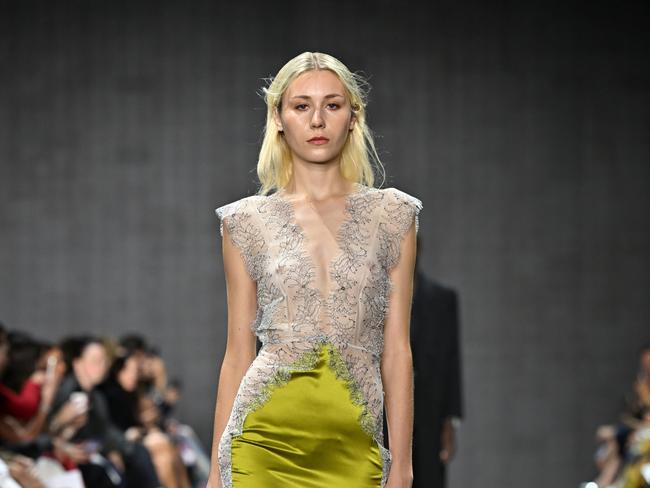
What can we take from this year’s Australian Fashion Week? For many, it was something of a reset. When IMG pulled out of the event late last year it set off both immediate action in the industry to save the week, and introspection about what it should be.
For fashion designer Bianca Spender, the risk of losing fashion week was a reminder that it meant a great deal.
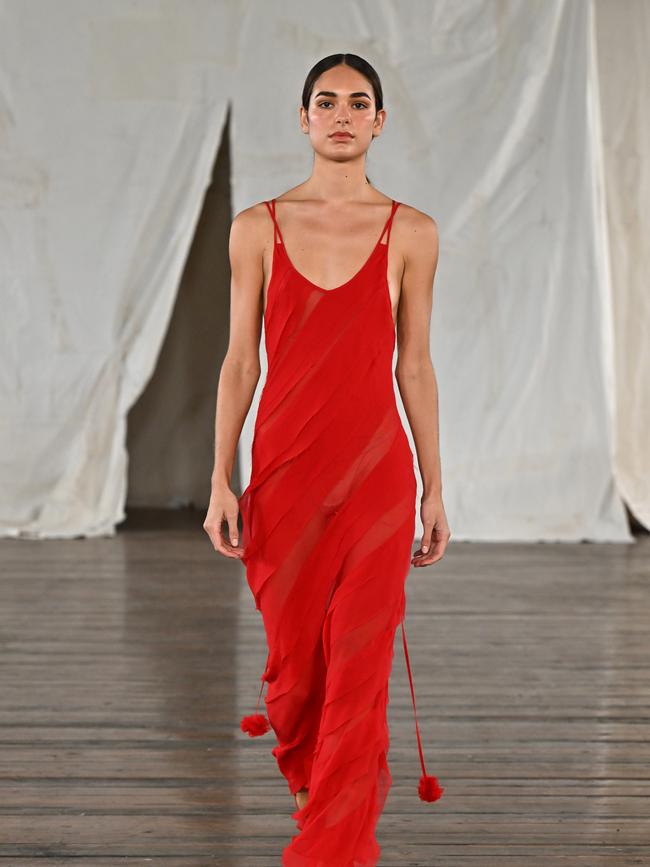

“I suppose there’s nothing like being in a place where we all in life get used to … and then there’s that moment where there is a threat to (it) not existing and then you realise and you really take count of how much it really is a part of our industry. And you really take stock of what it has meant to all of these brands and to our industry on a local and global scale,” she said.
“I think everyone’s got a unified feel. They all know that Fashion Week has played an important role in their career and their brand and that it’s a platform that is pivotal and really has a reach on a local and a global scale.”
The reimagining and the introspection led to the not-for-profit industry body, the Australian Fashion Council, taking custodianship of the event.
This year it has refocused on the designers and added a clearer wholesale element with the introduction of new trade showrooms that are intended to facilitate business, with local and international buyers in attendance.
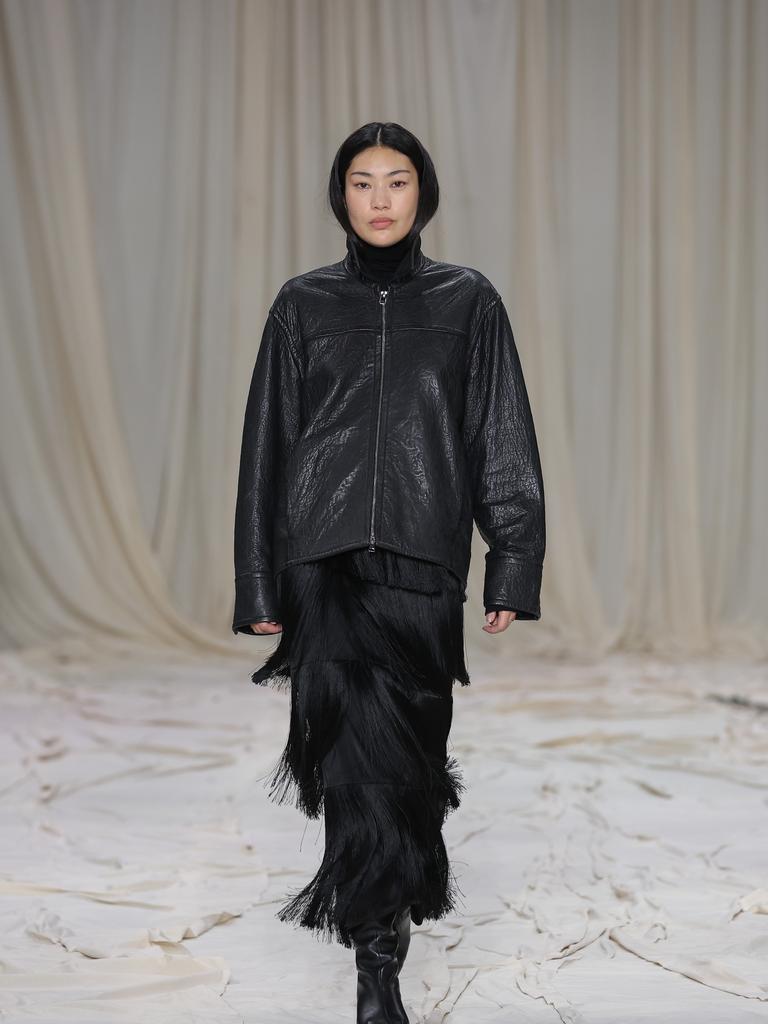
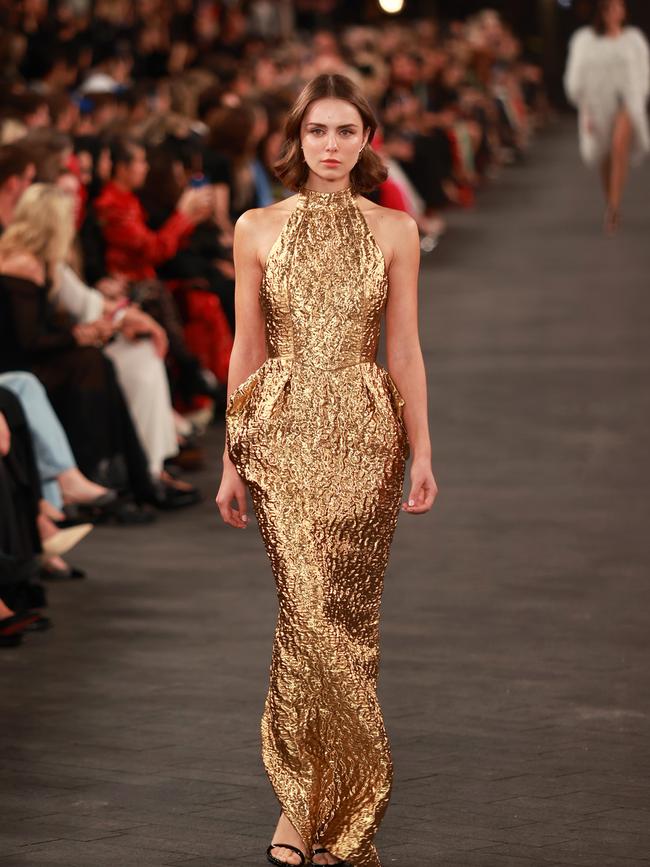
This focus resonated, said Renuka Kimber, co-founder of Melbourne menswear brand Christian Kimber, which showcased in The Atelier showroom.
“The renewed focus on wholesale appointments and showroom activations during Fashion Week is a crucial and strategic step – I’d like to see more of it,” she said.
“It reinforces the idea that fashion weeks aren’t just creative showcases; they’re business-critical junctions for growth, orders, and global expansion. That commercial lens is essential.”
Kimber noticed a more streamlined week meant more attention was paid to the clothes.
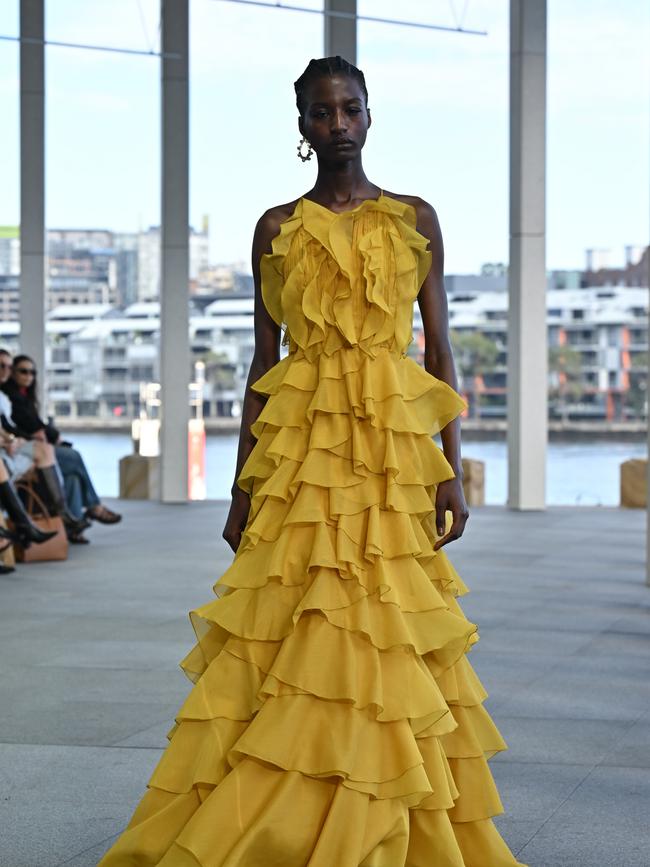
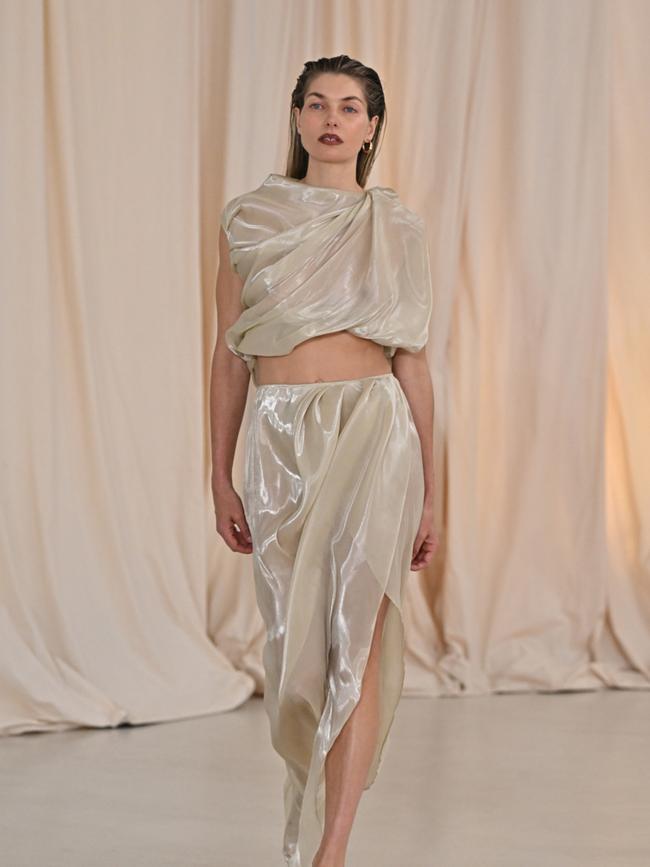
“Fewer shows, fewer distractions – but each moment was distilled, focused, and thoughtfully executed. The result? A deeper engagement with the clothing itself,” she said.
So what of the clothes? This year there was a noted shift toward brands having a distinct point of view and doing what they do well – see the likes of Aje, Bianca Spender and Lee Mathews. Newer brands such as Beare Park have also quickly defined their viewpoint, with the brand leaning into an easeful take on glamour with slinky, silky tops that twisted at the back and louche suiting that works equally as well for work as it does play.
Indeed, a sense of dressing up permeated many collections. There were lots of sheer maxi-dresses in fabrics such as georgette and chiffon, polka dots, shininess – be it in silk, taffeta or sequins, special details such as crochet and embellishments, lots of draping and asymmetric silhouettes, leather separates and a relaxed take on suiting that very much fits the Australian way of dressing.
Unexpected colours such as jolts of chartreuse and buttery yellow were spied in several collections – a shock to the system, but in a good way.
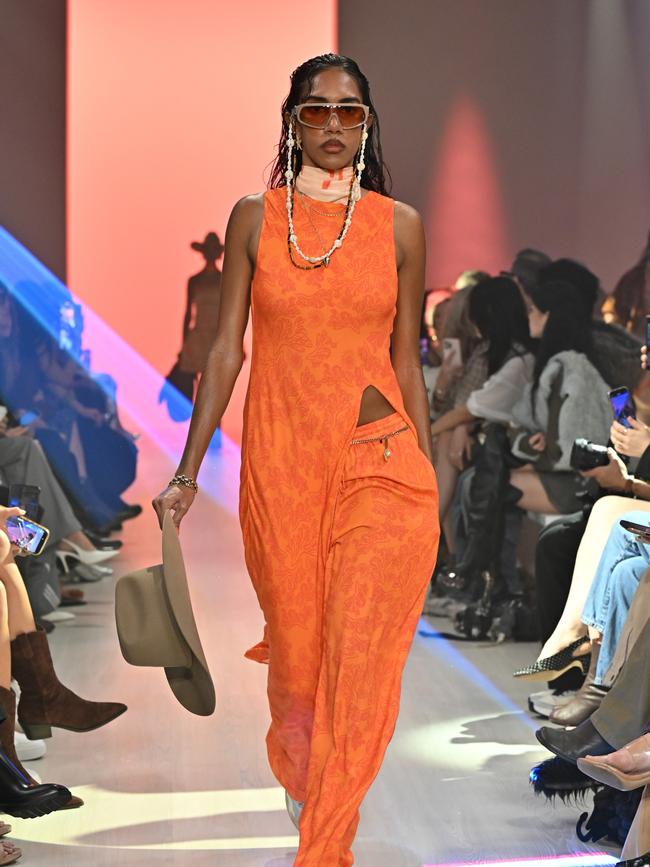

Still, and delightfully, a sense for the theatrical could be found on the runways at the likes of Iordanes Spyridon Gogos, Nicol & Ford and Romance Was Born, who closed out the week on Friday.
The latter celebrated their 20th anniversary with a lush and opulent collection amid a set comprising of trees, mounds of fake snow and a dancer who weaved about both. The collection paid homage to the Ballet Russes and one of the design duos’ favourite inspirations, the wonder of childhood nostalgia. The pair also collaborated with 2024 Archibald Prize winner Laura Jones.
For Luke Sales, co-founder of Romance Was Born, collaborating with artists is a way of staying creatively supercharged.
“It lifts our energy, each collection. It also brings a fresh perspective each season and we really need that sometimes, not that we are ever void of any inspiration, but the world of fashion can feel repetitive and a new collaborator brings a fresh voice through their work,” he said.
The collection featured deeply embellished, hyper colour pieces, some with dramatic capes, layers of tulle and plays on volume.
Another source of delight was spotting actor Rachel Griffiths sat front row wearing a piece from the brand’s pre fall ‘25 collection with a sequinned Muriel Heslop on the back, a tribute to the iconic 1994 Australian film Griffith starred in alongside Toni Colette.
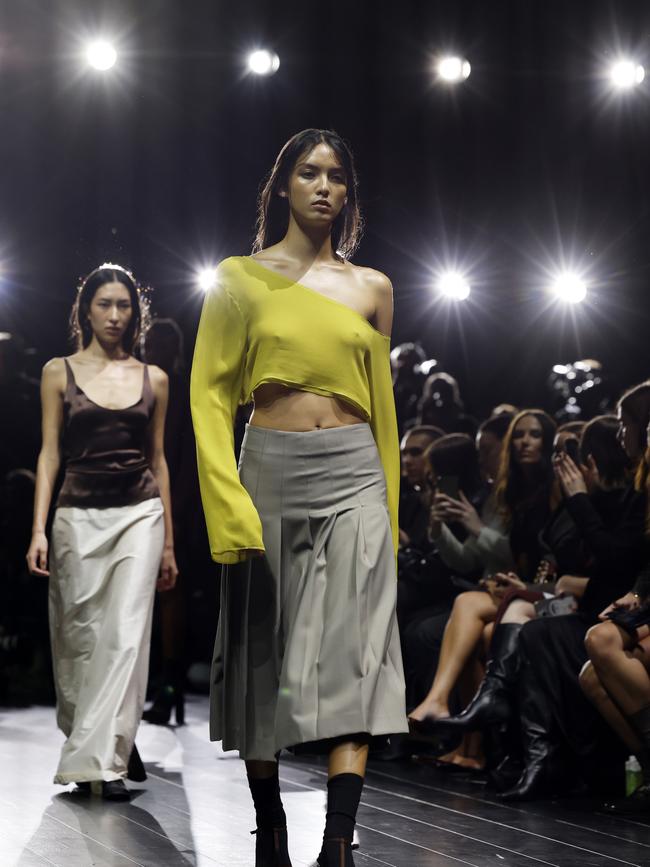
Eva Galambos, director of Sydney luxury boutique Parlour X, who said her highlight shows this year were The Frontier (a group show featuring the likes of Esse and Paris Georgia), Bianca Spender, Iordanes Spyridon Gogos and Romance Was Born.hopes to see more of the bigger Australian brands show in the future. “I personally would like to feel their presence, and also to ensure any international visitors, or global spectators, can see our entire industry’s offering,” she said.
Kellie Hush, chief executive of Australian Fashion Week, will be taking stock with her team after this week to look at what can be improved in the future. She believes more designers will participate next year.
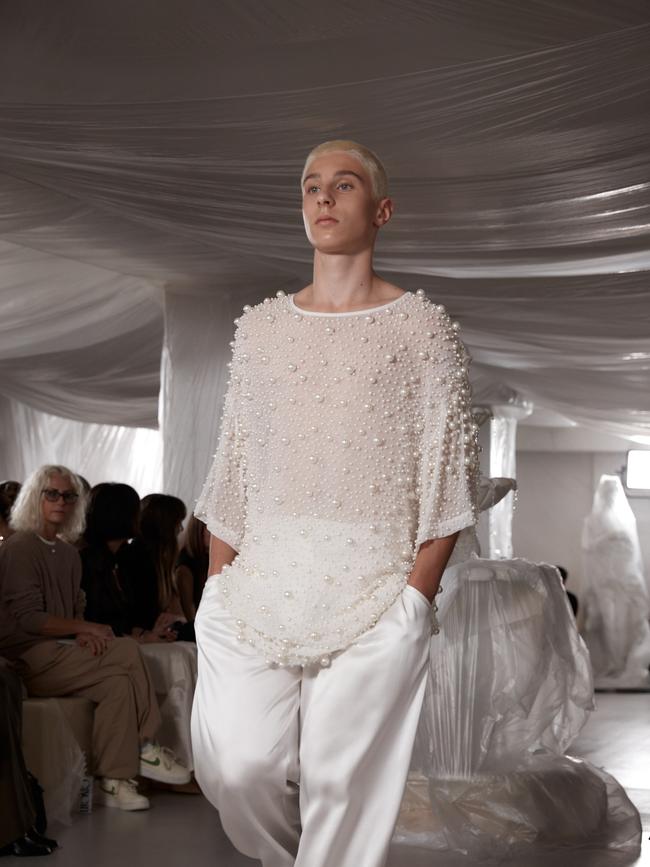

“The AFC started this new era with industry consultation, and we will again speak to the industry about how we continue to deliver what they need,” she said. “I am confident we will have more demand next year so that will mean adding another runway space so more designers can participate.
“A longer lead time will mean we can expand our international delegate and buyer program,” she said adding that one international buyer asked for Australian beauty brands to be showcased alongside clothes next year.
Jaaana Quintance-James said she’s immensely proud of the week, and what the AFC has achieved.
“Australian Fashion Week is a critical platform for showcasing the strength, creativity and potential of our industry - positioning Australian fashion as a cultural and economic powerhouse in the minds of government, global markets, and consumers at home and abroad,” she said.
“We can’t wait for next year.”
The possibilities of Australian Fashion Week are something that Nicky Zimmermann, co-founder and creative director of Australia’s most successful fashion brand, Zimmermann, knows well.
Zimmermann now shows on the official Paris Fashion Week schedule but believes wholeheartedly in Australian fashion – and Australian Fashion Week.
“It was 100 per cent a launching pad for us. It’s very different times in fashion for sure, and so the approach needs to be a little different. So I think it will be really interesting,” she said.
“Obviously we’re very supportive of the event and know how important it is for Australian fashion. And I think it is also so important that Australians actually take Australian fashion seriously. It is a serious business and there are huge possibilities and there are hugely talented people.”

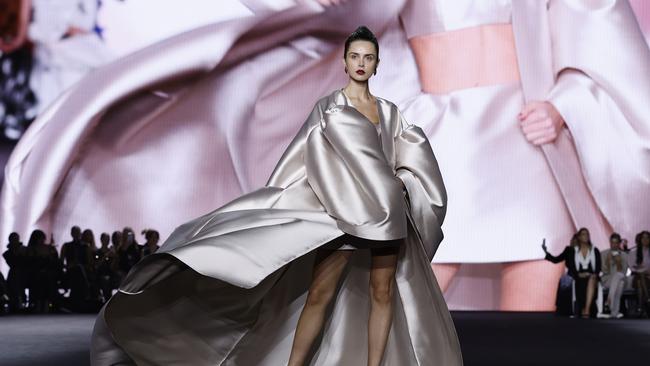
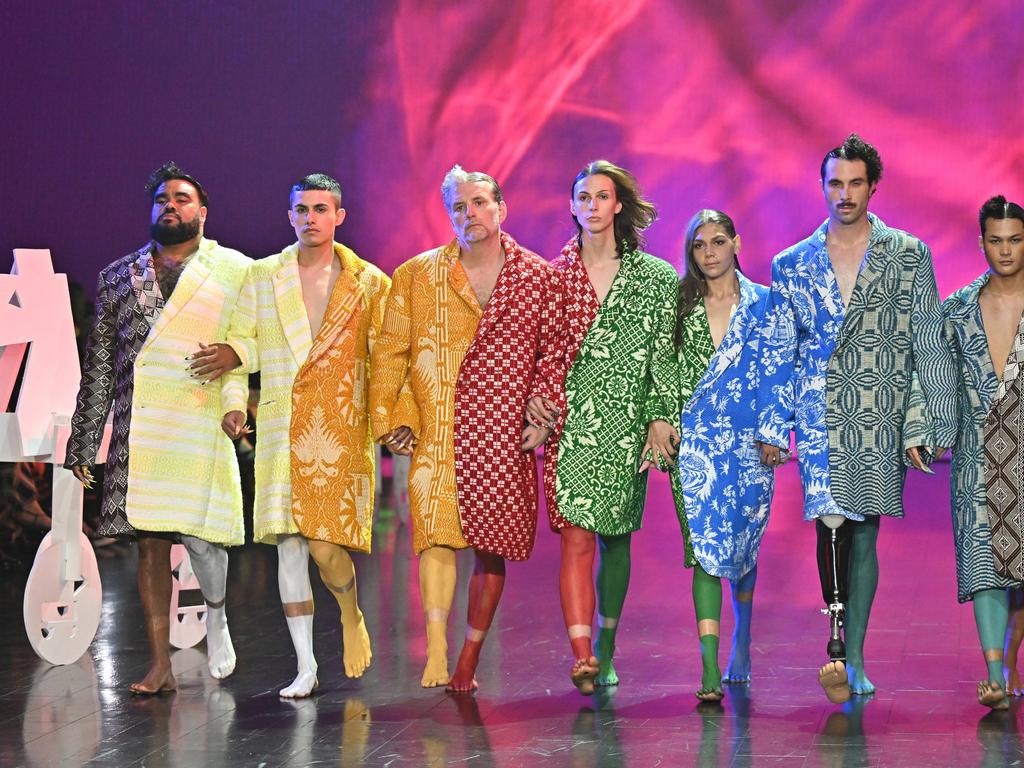
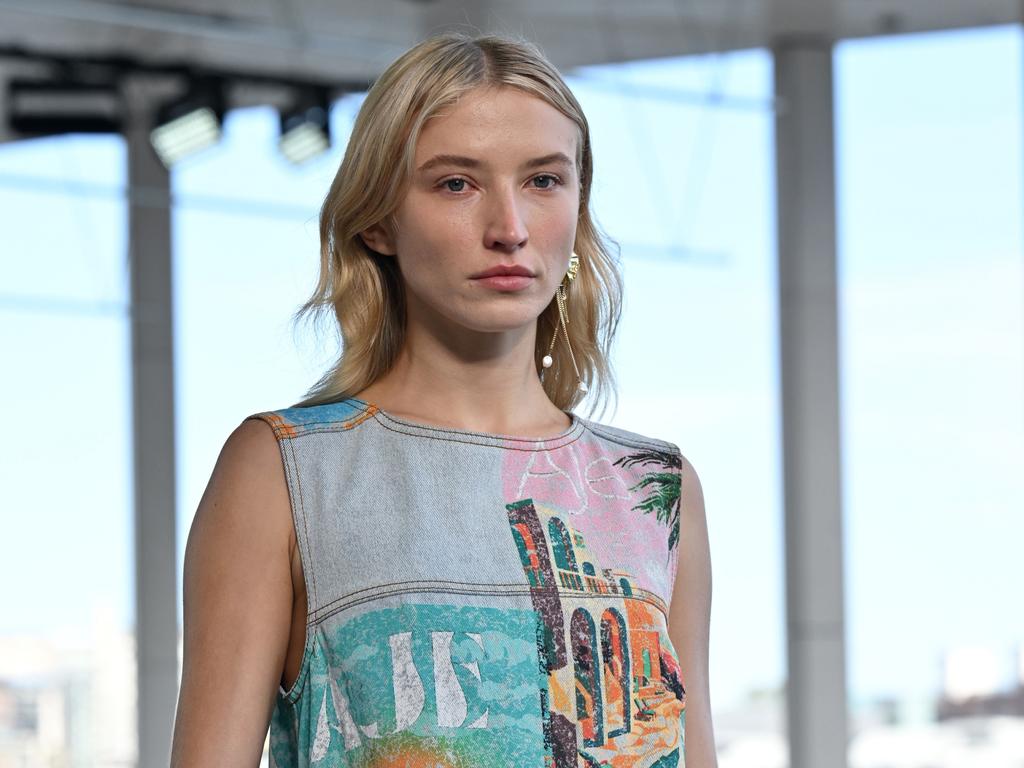
To join the conversation, please log in. Don't have an account? Register
Join the conversation, you are commenting as Logout